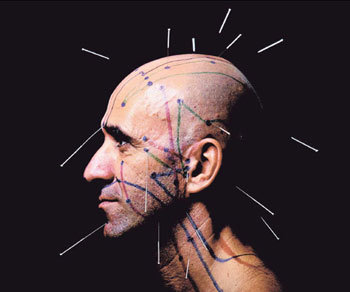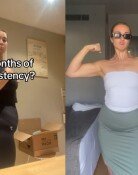Acupunctures Evolution

There was a time when modern Western and traditional Chinese medicine had engaged in a territorial dispute over intramuscular stimulation (IMS) pain treatments. Both sides had a point it turns out, as current treatments use needles, complemented by modern medicine.
Acupuncture is in the spotlight again. Even the U.S. Food and Drug Administration (FDA) and the World Health Organization (WHO) have acknowledged the efficacy of acupuncture.
Modern medicine uses a neurological approach to acupuncture. Its hypothesis is that when needles stimulate nerves, that stimulation is transmitted to the brain, affecting the secretion of endorphins and other hormones. In contrast, Chinese medicine analyzes that acupuncture cures diseases by stimulating the meridian pathwaysthrough which vital energy is penetrated and acupoints are linkedand removing obstructions to those pathways. Modern and Chinese medicine have different understandings of the principles, but they both recognize the efficacy of the treatment.
Acupuncture efficacy: letting vital energy flow unimpeded by stimulating meridian pathways for about half an hour-
You should not believe someone who proclaims that he can cure a disease with only one or two acupuncture treatments. There has been no such miraculous treatment throughout history and the world.
Chinese medicine likens the efficacy of acupuncture to the flow of water. Opening a water main once or twice only does not guarantee purification of the water; in order to clear the way for your vital energy, you need to get at least three acupuncture treatments. In some cases, you might have to get 15 to 20 treatments depending on what disease you have. The best interval for getting acupuncture treatments is usually about two to three days.
Except for some types of acupuncture, most acupuncture treatments leave needles in your body for about 30 minutes, because it takes 30 minutes for vital energy to circulate in a human body. When needles stimulate the body, a neurotransmitter called acetylcholine is released in 15 minutes and ceases to be released in 30 minutes, so this makes some sense from the perspective of modern medicine as well.
When feeling stomach heaviness, you prick the tip of your finger with a needle; you feel better as blackish blood comes out. Blackish blood indicates an insufficient supply of oxygen, so drawing out this blood helps release congested vital energy. This is how Chinese medicine interprets the same phenomenon.
Acupuncture should not be carried out after massive bleeding-
You should not take a shower right after getting an acupuncture treatment. One might feel exhaustion after acupuncture treatments, or risk infection of the body parts treated with acupuncture. You should wait for at least two hours after a treatment to take a shower.
Sometimes you might see blood coming out when pulling out needles after a treatment. You might think that unhealthy blood is being released, but it might not be the case. This means some of your capillary vessels are hurt by needles, which can be technically considered a mistake on the part of the acupuncturist. However, this will not cause any particular side effects.
Needles do not directly touch nerves, so you do not have to worry if needles might cause nerve damage.
Nevertheless, not everyone can be treated with acupuncture.
According to Asian medical literature, acupuncture is not recommended after drinking alcohol; after severe perspiration or diarrhea; when suffering severe thirst or emotional fluctuations; after overwork, overeating or fasting; and before and after having sex. Acupuncture should also be avoided when one has been extremely weakened or has bled due to a surgical operation or childbirth.
Acupunctures evolution-
Acupuncture needles are usually categorized by the part of the body they are applied to. Depending on the body parts the needles are applied to, needles are classified as foot, finger, head and ear acupuncture needles.
New types of acupuncture, upgraded from the traditional methods, have recently been coming out. One of them is medication acupuncture, which uses needles with medication at the tip that act much like injectors in shape and method of treatment. This type of treatment has an immediate effect, but creates more stimulation than ordinary acupuncture, sometimes leaving severe bruises.
Electrical acupuncture stimulates the body by sending electricity through the needles. One advantage of the therapy is that using electricity makes it easy to control the strength and weakness of the stimulation.
Light acupuncture, which uses lasers, causes no pain because insertion of needles is unnecessary.
Aroma-based acupuncture has also been introduced. Using needles coated with aromatic oils, the therapy is used on patients with facial paralysis or headaches. It works by applying acupuncture needles to the face, with the fragrance stimulating the nose and, subsequently, the brain.
Ceramic acupuncture, which uses far infrared rays, is another type of treatment projected to come out soon.
Sang-Hoon Kim corekim@donga.com







